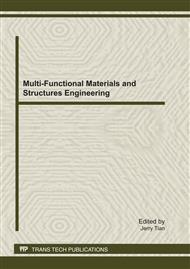p.115
p.119
p.124
p.131
p.135
p.142
p.148
p.154
p.160
The Effect of Varying Degrees of Radial Meniscal Tears on the Knee Contact Stresses: A Finite Element Analysis
Abstract:
Knee osteoarthritis (OA) is believed to result from high levels of the contact stresses on the cartilages and menisci after radial meniscal tears but not clearly proved. This research investigated the effect of varying degrees of radial meniscal tears on the peak compressive and shear stresses in the knee joint. An elaborate three-dimensional (3D) knee finite element (FE) model was developed from CT (computerized tomography) and MRI (magnetic resonance imaging) images. This model was used to model varying degrees of radial meniscal tears (involving 0%-90% radial width of the medial meniscus). Two different conditions were compared: a healthy knee joint and a knee joint with meniscal tears. The peak compressive and shear stresses were found in the posterior region of the medial meniscus and the corresponding zone of the cartilage, and they increased with the increasing width of radial tears. After meniscal tear involving 90% radial width, the peak compressive and shear stresses got their highest values. It shows that meniscal tear greater than 40% radial width drastically increases the contact stresses in the knee joint.
Info:
Periodical:
Pages:
135-141
Citation:
Online since:
July 2011
Authors:
Price:
Сopyright:
© 2011 Trans Tech Publications Ltd. All Rights Reserved
Share:
Citation:


